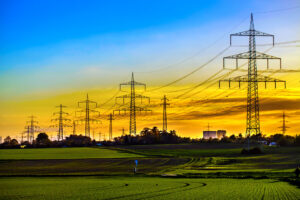
Electricity bills can make up a substantial portion of your monthly expenses, especially with the rising costs of energy. No wonder folks are always occupied with the question – how to lower my electric bill? Fortunately, there are innovative technologies available that not only help reduce your energy consumption but also cut down on your electric bills significantly. One such solution is investing in an energy monitoring and management system. This article explores how these systems work.
Understanding Energy Monitoring & Management Systems
Energy monitoring and management systems are designed to provide real-time data on the energy consumption of your household. These systems typically consist of sensors and meters that track the electricity usage of different appliances and electronics in your home. The data collected is then processed and displayed via an app or software interface, giving you a detailed breakdown of where and how energy is being used.
The beauty of these systems lies in their ability to pinpoint energy-draining appliances or practices within your home. For example, you might discover that your old refrigerator or standby electronic devices are guzzling more electricity than expected. By identifying these energy hogs, you can take targeted actions to reduce consumption, such as upgrading to more energy-efficient appliances or simply unplugging devices when they’re not in use.
Benefits of Energy Monitoring Systems
- Reduced Energy Waste: The primary advantage of using an energy monitoring system is the reduction of unnecessary energy consumption. By understanding your energy usage patterns, you can make informed decisions about how to use appliances more efficiently.
- Cost Savings: Naturally, using less energy leads to lower electricity bills. Many homeowners report significant savings after installing energy management systems, as these devices provide the insights needed to cut down on wasteful practices.
- Environmental Impact: Reducing your energy consumption isn’t just good for your wallet—it’s also good for the planet. Lower energy use translates to reduced greenhouse gas emissions, contributing to a healthier environment.
- Maintenance Alerts: Some advanced systems offer maintenance notifications for connected appliances. This feature can help prevent costly repairs and prolong the life of your appliances by alerting you to potential issues before they become major problems.
How to Choose the Right System
When selecting an energy monitoring and management system, consider the following factors:
- Compatibility: Ensure the system is compatible with your home’s existing electrical setup and appliances.
- Features: Look for systems that offer detailed analytics, user-friendly interfaces, and customizable alerts.
- Cost: Evaluate the initial investment against potential energy savings. While some systems might be more expensive upfront, the long-term savings can be substantial.
- Reviews and Recommendations: Research user reviews and ask for recommendations to find a reliable system that has worked well for others.
Implementing the System in Your Home
Installing an energy monitoring system can vary from a simple DIY project to requiring professional assistance, depending on the complexity of the system. Basic plug-in devices can often be set up without professional help, but for whole-house systems that integrate with your electrical panel, it’s wise to hire a certified electrician.
Summing up, in an era where every penny counts and environmental consciousness is on the rise, energy monitoring and management systems present a smart solution for homeowners looking to take control of their energy usage and expenses. Not only do these systems answer the question how to lower electric bill by providing valuable insights into your energy consumption, but they also empower you to make changes that benefit both your bank account and the planet.
